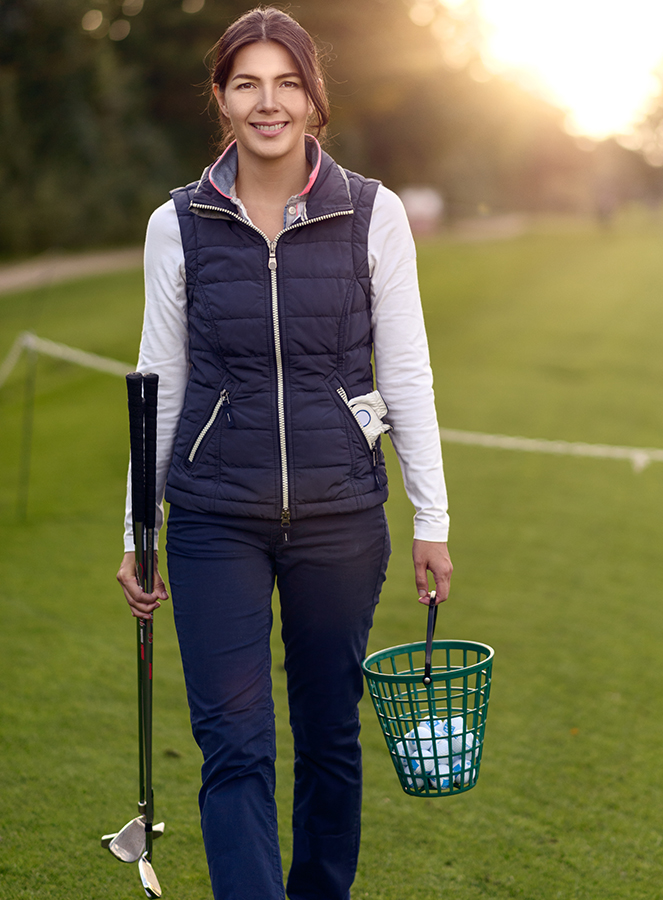 Have you ever wondered why sometimes you hit the ball on the range like a champion and when you step over to the first tee box it seems as if all your skills went MIA? Or on the flip side, have you gone to the range for an hour or two and leave feeling that it was a big waste of time and you actually got worse? Golf is one of the rare sports that we actually do most of our practice off the playing field. Many golfers practice by grabbing a bucket or two of range balls at the driving range and banging away in hopes of finding that special feeling.
Have you ever wondered why sometimes you hit the ball on the range like a champion and when you step over to the first tee box it seems as if all your skills went MIA? Or on the flip side, have you gone to the range for an hour or two and leave feeling that it was a big waste of time and you actually got worse? Golf is one of the rare sports that we actually do most of our practice off the playing field. Many golfers practice by grabbing a bucket or two of range balls at the driving range and banging away in hopes of finding that special feeling.
Next time you go to the range, consider that there are four important types of practice: Block, Random, Variable, and Play Style practice. Block practice is what most golfers do as mentioned earlier. Block practice is important to develop good techniques for the long and short game. Studies show that block practice is especially important for the newer golfer learning the basics of swing mechanics. The more reps, the better. However, as a player’s skill progresses then block practice becomes less of a factor because it doesn’t mimic all the conditions that arise on the course. We never hit twenty 7-irons in a row on the course, yet we do it on the range all the time. We never hit the same five foot putt on the course either. There is merit to repetitive practice, but only to a point.
Random practice is very important for transference of skills to the golf course. As a golf instructor, I consistently remind my students to do random practice. This means choosing random targets while on the range or short game area and changing clubs constantly. One style of random practice is to never hit the same club twice in a row while also choosing different targets. This is more similar to what it’s like on a golf course. Studies show that after a golfer has developed a certain level of ball striking ability, golfers who engage in random practice are more apt to improve their scoring on the course than golfers who engage more in block practice.
Variable Practice is the next step in the progression of skill acquisition. There are many forms of variable practice, but I recommend starting with learning to curve the ball both directions and at various targets. This means putting a target stick 10 yards in front of the line of flight and hitting draws and fades around the stick back to the target. By doing this, you become much more aware of club face and path relationship and can start using this skill when you deem necessary on the course. It will also help you correct your stock swing when it gets off. After hitting some curves, then work on flighting the ball different trajectories. This helps control the ball when dealing with wind. There are many other forms of variable practice but start with these two.
Finally, we have play-style practice. This is basically playing imaginary holes, though doing so on the range. This means taking out your driver out and picking a fairway between two targets on the range. Do a full pre-shot routine behind the ball, then step up and hit the driver. Next, take an iron out and go through the same routine at a different target pin. If you “miss” the green, then take a wedge out and hit a chip or pitch shot at a target on the range.
So, next time you practice, consider organizing your practice with a bucket of fifty balls around these four styles. Use the first fifteen balls for quality block practice. Put down an alignment stick, work on set-up and your swing mechanics or something technical from a lesson you had with an instructor. Be deliberate, take a lot of practice swings and concentrate on the technical moves. For the next fifteen balls, shift gears into random practice, changing clubs and targets on the range. Concentrate more on the feel and the target. Then, for 10 balls, have some fun and do variable practice working on different curves and trajectories. Finish the last 10 balls with simulated play-style practice. You will start getting the most out of your time and the scores will no doubt start to come down!
By Brech Spradley, PGA
Barton Creek Golf Academy
Bartoncreekgolfacademy.com